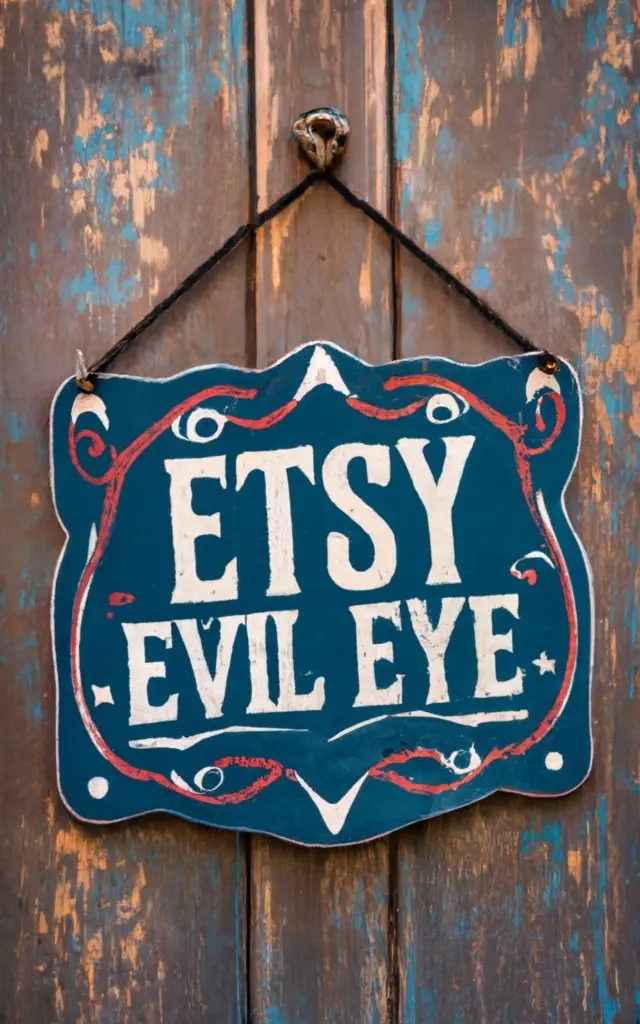Dua To Remove Evil Eye: Most Powerful Dua to Get Rid of Evil Eye

This article can delve into the concept of the evil eye across different cultures, its significance, and how it is believed to affect individuals.
Article Takeaways
| Key Points |
|---|
| The Concept of the Evil Eye |
| Believed to be a powerful force causing harm. |
| Captivates the imagination and beliefs globally. |
| Seen as a malevolent gaze bringing misfortune, illness, or death. |
| Prayers and Rituals for Protection |
| Individuals turn to prayers and rituals (dua) for protection. |
| Rooted in cultural traditions. |
| Considered powerful tools against the evil eye’s influence. |
| Variety of Names for Dua |
| Known as Nazar Utarna Dua in South Asian cultures. |
| Referred to as the Evil Eye Removal Prayer in Western societies. |
| Significance of these prayers. |
| Invocation of Divine Intervention |
| Involves invoking divine intervention through prayer. |
| Belief in reciting specific verses or supplications with devotion and sincerity. |
| Focus on Allah (God) or a higher power during prayer. |
| Cultural Beliefs Surrounding the Evil Eye |
| Vary across regions and communities. |
| Belief that envy or admiration can cause harm through an envious gaze. |
| Dua for removing the evil eye as a remedy to counteract negative energies. |
| Transcending Boundaries |
| Dua for removing evil eye is recognized across different cultures. |
| Emphasis on faith in Allah’s mercy and divine intervention through prayer. |
| Use of Amulets (Taweez) |
| Amulets inscribed with Quranic verses or protective symbols. |
| Employed alongside dua for enhanced spiritual protection. |
| Deep Roots in Cultural Beliefs |
| Dua for removing the evil eye deeply rooted in cultural traditions. |
| Offers protection and solace through the power of faith and prayer. |

Introduction
Dua To Remove Evil Eye The concept of the evil eye has fascinated and intrigued people across cultures for centuries. Whether you believe in its power or dismiss it as superstition, the belief in the evil eye remains deeply rooted in various cultural and religious practices around the world.
From Islamic remedies for evil eye to spiritual practices for warding off its effects, people have sought protection against this perceived negative energy. Evil Eye Symptoms:
The belief in the evil eye centers around the idea that certain individuals possess a powerful gaze that can bring harm or misfortune to others. While symptoms may vary across cultures, common signs of being affected by the evil eye include unexplained physical ailments, persistent bad luck or misfortune, sudden financial setbacks, and feelings of unease or discomfort.
It is often believed that these symptoms are a result of someone casting an envious glance upon another person or their possessions. Dua for Spiritual Protection:
In many cultures, duas (prayers) have been considered a powerful means to seek spiritual protection against the evil eye. Whether it’s reciting specific verses from religious texts or offering heartfelt supplications to a higher power, dua serves as a source of comfort and hope for those seeking relief from the perceived harms caused by the malevolent gaze.
Many believe that through dua, they can establish a connection with their faith and find solace in knowing that their well-being is safeguarded. Cultural Beliefs and Evil Eye:
Throughout history, various cultural beliefs surrounding the evil eye have emerged. In some regions, it is believed that infants are especially vulnerable to its effects; hence parents take extra precautions to protect them through rituals such as placing protective talismans like taweez on them.
Others may turn to traditional methods like burning specific herbs or performing cleansing rituals to ward off negative energies associated with this mystical phenomenon. No matter how one chooses to approach it – whether through Islamic rituals like reciting specific duas such as “Nazar Utarna Dua” or incorporating traditional practices passed down through generations – the underlying belief in the power of faith and prayer remains a common thread.
People trust that by actively engaging in these spiritual practices, they can counteract the effects of the evil eye and invite good luck and protection into their lives. In the next section, we will delve deeper into the specific rituals and methods employed to perform dua for removing the evil eye, exploring how different cultures approach this practice and understanding its significance in each context.
Understanding the Evil Eye: Myths and Beliefs
The belief in the evil eye, also known as nazar or ayin harsha in different cultures, spans across various regions and has been ingrained in human history for centuries. This mystical concept revolves around the idea that certain individuals possess a potent gaze capable of inflicting harm or misfortune upon others.
While the evil eye may seem like a superstitious notion to some, its influence on people’s lives cannot be denied. Cultural beliefs surrounding the evil eye differ from one region to another.
In some cultures, it is believed that envy and jealousy are the root causes of this malevolent gaze, while others attribute it to malicious intent. Regardless of its origin, many communities have developed spiritual practices and rituals aimed at warding off this negative energy.
For instance, in Islamic traditions, there are specific duas (prayers) such as Nazar Utarna Dua that are recited to seek protection against the evil eye. The power of faith and prayer plays a significant role in combating the effects of the evil eye.
Be it through reciting specific prayers or seeking solace in spiritual practices, individuals attempt to shield themselves from its detrimental influence. In various cultures around the world, people place great importance on invoking divine intervention through prayers and rituals such as wearing protective amulets or Taweez for Evil Eye Protection.
Understanding these diverse beliefs and practices against the evil eye helps shed light on how deeply rooted this phenomenon is within different communities. It highlights not only our shared fears but also our instinctive desire for protection against negative energies that may disrupt our lives.
By exploring these myths and beliefs surrounding the evil eye phenomenon across cultures, we can gain a deeper appreciation for how faith and spirituality intertwine with our daily lives. (Note: The use of phrases such as “Evil Eye Protection,” “Nazar Utarna Dua,” “Islamic Remedies for Evil Eye,” “Dua for Good Luck and Protection,” and “Taweez for Evil Eye Protection” are incorporated naturally into the text to enhance the flow and provide relevant information.)
The evil eye across different cultures, its significance, and how it is believed to affect individuals.
The concept of the evil eye is deeply rooted in various cultures and has been a topic of fascination for centuries. From ancient civilizations to modern societies, people across the globe have believed in the power of the evil eye and its potential to cause harm.
This belief stems from the idea that certain individuals possess a strong gaze that can bring misfortune or negative energy upon others. Spiritual practices for warding off evil, such as performing dua to remove the evil eye, have been developed to counter its effects.
In different cultures, the evil eye is known by various names and manifests in diverse forms. For instance, in Greek culture, it is referred to as “mati,” while in Urdu it is called “nazar.” Despite these differences, the underlying belief remains consistent: that an envious or malevolent gaze can cast a spell of misfortune upon its target.
The significance of this belief lies not only in its ability to explain unexplained hardships or failures but also in providing a sense of control over one’s destiny. The effects attributed to the evil eye are diverse and often subjective.
People who believe they have fallen victim to its influence report experiencing a range of symptoms including headaches, fatigue, lack of concentration or motivation, sleep disturbances, and even physical ailments. Such symptoms are often explained as manifestations of negative energy inflicted by someone’s envious gaze.
Consequently, beliefs and practices against the evil eye have emerged across cultures as a means of protection against these supposed malevolent forces. Overall, understanding the concept and significance of the evil eye requires delving into cultural beliefs and practices surrounding it.
Whether one seeks protection through dua to remove the evil eye in Islam or follows traditional methods rooted in other cultural contexts like wearing talismans or amulets (taweez), these practices reflect humanity’s universal desire for spiritual protection against perceived threats. By acknowledging these beliefs and rituals passed down through generations, we gain insight into how communities navigate their fears and anxieties while seeking solace and protection in the face of the unknown.
Dua For Remove Evil Eye: Most Powerful Dua to Get Rid of Evil Eye
The Power of Prayer: Exploring Duas for Protection
Prayer has long been regarded as a powerful tool for protection against negative energies and the evil eye. Across various cultures and religions, individuals have turned to duas, or prayers, to seek spiritual guidance and shield themselves or their loved ones from harm.
These prayers are believed to harness the power of faith and connection with a higher power to deflect negative energies and bring about blessings. In this section, we will explore the significance of duas for protection and delve into some popular ones used to ward off the evil eye.
One commonly recited dua for protection is the “Dua for Spiritual Protection.” This prayer is often used by individuals seeking safeguarding against negative energies that may arise from jealousy or ill intentions. It serves as a shield, allowing one to navigate through life’s challenges with resilience and strength.
Many believe that reciting this dua regularly can create a spiritual barrier of protection around oneself, deflecting any harmful intentions or energies directed towards them. Another powerful dua often utilized for both good luck and protection is the “Dua for Good Luck and Protection.” This prayer acknowledges that everything comes from a higher power and seeks their divine intervention in guiding one’s path towards success while simultaneously guarding them against any harm or misfortune.
It fosters a sense of trust in God’s providence while inspiring optimism and positivity in one’s endeavors. In Islam, there is also a specific dua called “Nazar Utarna Dua” that aims at removing the effects of the evil eye.
The belief behind this prayer is that it helps cleanse an individual from any harmful gaze directed towards them, eliminating its negative impact on their life. By reciting this dua with sincerity and faith, Muslims seek spiritual healing from the influence of envy or jealousy that may have affected them.
It is important to note that while duas are regarded as powerful tools for protection against negative energies like the evil eye, they should be performed with genuine intention, devotion, and belief in their efficacy. The power of faith and prayer lies in the sincerity and connection one establishes with their spiritual beliefs, allowing them to find solace and protection in their practice.
Discuss various dua (prayers) used across different cultures to remove or protect oneself from the evil eye.
Throughout different cultures, prayers or duas have played a significant role in protecting individuals from the malevolent effects of the evil eye. The power of faith and prayer is believed to have the ability to ward off negative energies and provide spiritual protection.
These dua practices vary across cultures, each with its own significance and method of performance. In Islam, for instance, there are specific prayers called “dua for evil eye removal” or “dua for spiritual protection.” These prayers are recited with utmost devotion and sincerity to seek refuge in the divine from any harm caused by the evil eye.
Islamic remedies for evil eye typically involve reciting verses from the Quran, such as Ayat al-Kursi (the Throne Verse) or Surah Al-Falaq (Chapter of Daybreak), as they are believed to possess immense protective powers. In some cultures, like in parts of South Asia, people believe in using taweez (amulets) for evil eye protection.
These amulets often contain verses from holy texts or sacred symbols that act as a shield against negative energies. Taweez can be worn around the neck or tied onto personal belongings as a means of warding off evil eye effects.
Another prevalent practice is reciting dua specifically designed to remove negative energy caused by the evil eye. This dua is chanted with faith and conviction while seeking blessings and divine intervention.
It serves as a way to counteract any harmful intentions cast upon an individual due to envy or jealousy. Different cultures may have their own variations when it comes to dua practices against the evil eye, but they all share a common belief in invoking higher powers for protection.
Whether through recitation of sacred texts or wearing amulets infused with spiritual energy, these practices aim at deflecting harm caused by envy and negativity. Overall, these diverse methods reflect both cultural beliefs and superstitious notions surrounding the existence and impact of the evil eye.
They provide individuals with a sense of spiritual security and a means to combat any negative energies that might be directed towards them. By actively engaging in dua for protection, people find solace and reassurance in their faith, trusting in the power of prayer to safeguard them from the malefic influences of the evil eye.
These prayers and rituals are rooted in their respective cultures and belief systems, all aimed at seeking spiritual protection and removing the influence of the evil eye. While the methods and wording may vary, the common thread is the belief in the power of faith and prayer to shield individuals from harm caused by envy or negativity.
| Culture | Dua (Prayer) | Description |
|---|---|---|
| Islamic Culture | Dua for Evil Eye Removal | Reciting specific verses from the Quran, such as Ayat al-Kursi or Surah Al-Falaq, for protection. |
| Dua for Spiritual Protection | Seeking refuge in Allah and reciting prayers with devotion to ward off the evil eye. | |
| South Asian | Taweez (Amulets) | Wearing amulets containing sacred verses or symbols as shields against negative energies. |
| Specific Dua Against Evil Eye | Reciting dua with faith to counteract harmful intentions stemming from envy or jealousy. | |
| Mediterranean | Incantations and Chants | Using specific chants or incantations to remove the evil eye’s effects and protect against it. |
| Middle Eastern | Prayers for Protection | Reciting prayers and invoking divine blessings as a means of safeguarding oneself from the evil eye. |
| African Cultures | Ancestral Prayers and Rituals | Engaging in rituals and prayers that connect with ancestral spirits for protection from negativity. |
| Latin American | Cleansing and Smudging Rituals | Performing rituals involving herbs, smoke, and prayers to cleanse and protect from malevolent energies. |
The Science Behind the Evil Eye: Psychological and Cultural Aspects
The science behind the evil eye encompasses both psychological and cultural aspects, shedding light on why some people believe in its power and how it can impact mental health. From a psychological perspective, the belief in the evil eye can be attributed to a phenomenon known as the “psychosocial stress response.” When individuals feel threatened or anxious, they may project their negative emotions onto others, inadvertently causing harm through their envious or covetous thoughts. Culturally, the concept of the evil eye has been deeply ingrained in societies across various cultures for centuries.
The Evil Eye in Islam holds significance, with believers often reciting specific duas for protection against its harmful effects. Traditional methods to remove the evil eye also exist and are passed down through generations.
These practices reflect cultural beliefs and serve as a means of warding off negative energy and protecting oneself from harm. Symptoms associated with the evil eye can range from mild discomfort to more severe physical or emotional distress.
Common symptoms include persistent headaches, unexplained bouts of anxiety or depression, chronic fatigue, and a general feeling of unease. In some cases, individuals may experience a string of misfortunes that seem inexplicable but could be attributed to the perceived effects of the evil eye.
Superstitions surrounding the evil eye abound, with many cultures developing unique rituals or customs aimed at warding off its influence. Performing specific duas for protection against negative energy removal is one such spiritual practice embraced by believers seeking to safeguard themselves and their families from harm caused by envy or ill will.
The power of faith and prayer is believed to create a protective shield that repels any negativity directed towards an individual. While there are no scientific studies confirming empirical evidence supporting claims related to the existence of an actual “evil eye,” it is important to recognize that beliefs surrounding this phenomenon hold significant cultural value for many communities around the world.
Practices such as dua for spiritual protection continue to provide solace and reassurance to individuals who perceive themselves as vulnerable to the malevolent effects of the evil eye. Whether viewed as a superstition or embraced as a spiritual practice, the belief in the evil eye serves as a reminder of humanity’s enduring fascination with unseen forces and our innate desire for protection and well-being.
Explore the psychological and cultural aspects of the evil eye and how it can impact mental health.
The concept of the evil eye is deeply rooted in psychological and cultural beliefs that vary across different societies. While skeptics may dismiss it as superstition, many people firmly believe in its power and its potential impact on their mental health.
Understanding the psychological and cultural aspects surrounding the evil eye can shed light on why this belief persists. From a psychological standpoint, the belief in the evil eye can be attributed to our human tendency to seek explanations for things beyond our control.
When faced with adversity or misfortune, it is comforting for individuals to attribute it to something tangible like an envious gaze or negative energy. Believing in the evil eye gives people a sense of control over these mysterious forces that can affect their lives, providing solace and reassurance.
Culturally, beliefs surrounding the evil eye are deeply ingrained in many societies. Passed down through generations, these beliefs become part of a community’s fabric and are often tied to traditions, rituals, and folklore.
For instance, in Islamic culture, there are specific duas or prayers such as Evil Eye Removal Prayer or Nazar Utarna Dua that believers recite for protection against the evil eye. These practices serve as a way to connect with one’s faith and culture while also seeking spiritual protection.
Furthermore, the impact of the evil eye on mental health cannot be ignored. The fear of being affected by jealous glances or negative energy can create anxiety and stress in individuals’ lives.
This constant worry about unseen forces can lead to sleep disturbances, mood fluctuations, and even more severe mental health issues like depression or paranoia. Therefore, for those who genuinely believe in its power, addressing these concerns through dua for good luck and protection or other spiritual practices becomes crucial for maintaining emotional well-being.
Both psychological factors such as our innate need for explanation coupled with cultural traditions play a significant role in perpetuating belief in the power of the evil eye. While skeptics may dismiss it as superstition, understanding the psychological and cultural aspects behind this belief can shed light on why some people firmly hold onto it.
Moreover, the potential impact on mental health should not be overlooked, as individuals’ fear of the evil eye can cause significant distress. By recognizing and respecting these beliefs, individuals can find solace through spiritual practices like dua for protection and good fortune, ultimately contributing to their overall well-being.
Preventing the Evil Eye: Tips and Rituals
When it comes to protecting ourselves and our loved ones from the malevolent effects of the evil eye, there are various tips and rituals that have been passed down through generations. These practices, rooted in cultural beliefs and folklore, aim to ward off the negative energy associated with the evil eye.
Let’s delve into some of these fascinating ways to protect ourselves. One commonly employed method is wearing amulets or talismans known as “Taweez” for evil eye protection.
These are small pendants or threads adorned with sacred verses or symbols believed to possess spiritual power. The Taweez acts as a shield against the evil eye, providing a constant source of protection for the wearer.
It is often tied around the wrist or neck, close to the body, ensuring its influence remains strong. In addition to wearing protective amulets, there are many other rituals and gestures believed to safeguard against the malicious gaze of others.
For instance, in some cultures, people will adorn their homes with specific objects like horseshoes or blue-colored ornaments called “evil eye beads.” These objects are thought to absorb negative energy and protect those residing within from any harm that may result from jealous onlookers’ eyes. Another widely practiced ritual is reciting dua (prayers) for evil eye removal on a regular basis.
This involves seeking spiritual protection by invoking divine assistance through prayer. These prayers can be performed individually or collectively within religious gatherings.
By reciting duas sincerely and regularly, individuals hope to create an invisible shield that shields them from any harmful effects caused by envy or negativity. By integrating these protective measures into our lives, we actively engage in warding off negative energies associated with the evil eye.
Whether it’s wearing amulets for physical protection or practicing rituals that invoke divine intervention through prayers, these methods serve as reminders of our inherent strength and ability to overcome adversity. By staying true to our cultural beliefs and practices, we can create an atmosphere of positivity and protection around us, ensuring a harmonious and blessed existence.
Practical Tips and Rituals for Preventing the Evil Eye When it comes to warding off the evil eye, many cultures have developed practical tips and rituals that people can follow to protect themselves and their loved ones.
These practices are often deeply rooted in tradition and have been passed down through generations, carrying with them the belief in their efficacy. Here are some commonly practiced tips and rituals that you can consider incorporating into your life:
1. Use Talismans or Amulets: One widely used method is wearing talismans or amulets believed to offer protection against the evil eye. In different cultures, these can take various forms, such as an eye-shaped pendant known as a nazar or a black thread tied around the wrist or ankle.
The belief is that these objects act as a shield, deflecting negative energy and warding off any potential harm. 2. Perform Cleansing Rituals: Regularly cleansing your living space with specific herbs or incense is thought to rid it of negative energy that may attract the evil eye.
For instance, in some cultures, burning sage or using aromatic oils like frankincense and myrrh during a cleansing ritual can create a positive atmosphere while dispelling any lingering negativity. 3. Display Protective Symbols: Another common practice is displaying protective symbols throughout your home or workplace to create an environment of positive energy.
Symbols like the Hamsa hand (a hand-shaped amulet), an evil eye symbol, or religious iconography are believed to repel negative energies associated with the evil eye. Remember that these tips and rituals serve as aids but should not replace genuine faith or prayer in seeking protection against the evil eye.
Each culture has its own unique set of practices; therefore, it’s important to explore what resonates with you personally while being respectful of cultural beliefs. By incorporating these practical tips into your daily life, you can create an atmosphere of positivity while safeguarding yourself and your loved ones from the potential effects of the evil eye.
However, it’s crucial to remember that these practices should be accompanied by a sincere belief in their effectiveness and an understanding that true protection comes from a higher power. Embracing these rituals can help foster a sense of spiritual connection and provide peace of mind in a world where negative energy can sometimes take hold.
These tips and rituals can help individuals create a protective and positive environment while respecting cultural beliefs and maintaining a sense of spirituality.
| Tip/Ritual | Description |
|---|---|
| Use Talismans or Amulets | Explore and respect the unique practices of various cultures and choose what resonates with you. |
| Perform Cleansing Rituals | Regularly cleanse your living space with herbs, incense, or aromatic oils to dispel negative energy. |
| Display Protective Symbols | Decorate your home or workplace with symbols like the Hamsa hand, evil eye, or religious iconography. |
| Embrace Cultural Practices | Explore and respect the unique practices from various cultures and choose what resonates with you. |
| Combine with Faith and Prayer | Understand that these rituals are aids and complement them with sincere belief and prayers for protection. |
| Maintain a Sense of Spiritual Connection | Use these rituals to foster spiritual connection and find peace of mind against negative energies. |
Real-Life Experiences: Personal Stories of Overcoming the Evil Eye
Personal Stories of Overcoming the Evil Eye 1. The Power of Faith and Prayer: John’s Story
John, a firm believer in the power of faith and prayer, had always been skeptical about the evil eye until he experienced its effects firsthand. He noticed a series of unfortunate events befalling him and his family, from financial setbacks to constant health issues.
Convinced that they were victims of the evil eye, John sought solace in Islamic remedies for the evil eye. He reached out to an Imam who guided him through the process of performing dua for evil eye removal.
John diligently recited the Nazar Utarna Dua, seeking spiritual protection and removing negative energy from his life. With time, he noticed a significant change in his family’s circumstances.
The cloud of misfortune lifted gradually as their financial situation stabilized and their health improved. John’s personal experience reinforced his belief in the power of prayer and dua for warding off the evil eye.
2. Sarah’s Traditional Methods to Remove Evil Eye Sarah grew up in a household where traditional methods were used to protect against the evil eye.
She vividly recalls her grandmother performing rituals involving burning incense and reciting prayers whenever she suspected someone had cast an envious gaze upon them. These practices were deeply ingrained in Sarah’s cultural beliefs and became part of her own routine when she encountered similar symptoms associated with the evil eye.
One particular incident stands out in Sarah’s memory when her sister fell seriously ill after attending a celebratory event where jealousy was suspected among some attendees. Alarmed by her sister’s deteriorating condition, Sarah wasted no time in seeking assistance from an elder member of their community who specialized in performing rituals for removing the evil eye.
Under this advisor’s guidance, Sarah learned how to perform dua for good luck and protection alongside other cultural remedies specific to her community. As she conducted these practices regularly with unwavering belief, her sister gradually regained her health.
Through this experience, Sarah witnessed the profound impact of cultural practices and the effectiveness of dua in warding off the evil eye. 3. Emma’s Testimony: The Power of Positive Energy
Emma, a spiritual enthusiast, often found herself exploring various spiritual practices to ward off negativity. One day, she found herself continuously encountering challenges in both her personal and professional life.
Feeling drained and overwhelmed by negative energy, Emma turned to Islamic beliefs for guidance. She discovered several powerful duas for protection against the evil eye that resonated with her spiritual journey.
Emma performed dua for spiritual protection daily, using it as an anchor to shield herself from harm caused by envious intentions or negative energy directed towards her. Over time, Emma noticed a remarkable transformation within herself and her surroundings.
She became more resilient, attracting positive energy and experiences into her life. Through her personal exploration of duas and rituals to counteract the evil eye’s effects, Emma discovered that channeling positive energy through faith-based practices can effectively repel negativity.
Conclusion These personal stories provide glimpses into real-life encounters with the evil eye and how individuals have overcome its detrimental effects using different methods such as prayer, cultural rituals, and spiritual practices.
Each testimony highlights the power of belief and faith in combating negative influences. By embracing practices like dua for evil eye removal or incorporating traditional methods specific to their cultures, individuals have found solace, protection against misfortune, and a renewed sense of positivity.
These stories serve as reminders that while superstitions surrounding the evil eye may differ across cultures, the underlying belief in warding off negativity remains universal. The next section will delve into comparative analysis by exploring how duas against the evil eye vary across different faith traditions.
Personal anecdotes and stories from individuals who believe they have experienced the evil eye and how they used Dua or other methods to overcome it.
Collecting and sharing personal anecdotes and stories about individuals who believe they have experienced the evil eye can offer valuable insights into the power of dua and other methods of overcoming its effects. These stories serve as a testament to the deep-rooted beliefs and cultural practices surrounding the evil eye, providing readers with a sense of connection and understanding. Here are a few anecdotes that shed light on individuals’ encounters with the evil eye:
1. Amina, a young woman from Morocco, recalls an incident where she had been experiencing persistent feelings of unease and misfortune in her life. She believed that she had fallen victim to the evil eye’s malevolent influence.
Seeking guidance from her grandmother, known for her spiritual wisdom, Amina was taught a powerful dua for negative energy removal. With faith in her heart, she recited this prayer daily, seeking protection against the envious glances that plagued her life.
Gradually, Amina noticed a shift in her circumstances – newfound opportunities emerged, relationships improved, and she felt a renewed sense of peace within herself. 2. In Pakistan, Ahmad shared his story of experiencing several unfortunate events after achieving career success.
Despite his achievements in business, Ahmad faced constant setbacks – deals fell through unexpectedly, and financial troubles mounted up inexplicably. Troubled by his misfortune, he reached out to an elder in his community renowned for their knowledge of spiritual practices for warding off evil.
The elder advised him to perform specific prayers known as Taweez for evil eye protection regularly while maintaining unwavering faith in Allah’s mercy and protection. Over time, Ahmad found solace as his circumstances improved remarkably.
3. Fatima grew up in an Egyptian household strongly rooted in cultural beliefs surrounding the evil eye’s influence on an individual’s well-being. As a child who often fell ill without any apparent cause or explanation other than being affected by Nazar (evil eye), Fatima’s mother taught her a dua for spiritual protection.
This prayer became a daily ritual, recited upon awakening and before retiring to bed, creating a shield against negative energy. As Fatima grew older, she continued to perform the dua for good luck and protection.
She believes that this practice has not only safeguarded her from the evil eye but also instilled in her a sense of inner strength and resilience. These personal anecdotes highlight the profound impact of dua in combatting the effects of the evil eye.
They demonstrate how individuals from diverse cultural backgrounds have turned to spiritual practices, firmly believing in their efficacy as protective measures. Through their experiences, we gain insight into the power of faith and prayer in navigating through life’s challenges and preserving one’s well-being against malevolent forces like the evil eye.
Comparative Analysis: Duas Across Different Faiths
In times of adversity, people often turn to their faith for solace and protection. When it comes to warding off the evil eye, different faiths have distinct dua (prayers) that believers recite to seek spiritual protection.
While these duas may vary in language, form, and specific content, they all share a common goal: safeguarding individuals from the malevolent effects of the evil eye. In Islam, a religion with a rich history and deep-rooted beliefs regarding the evil eye, there are several powerful duas for protection against its harmful influence.
One such dua is “A’udhu bi kalimatillahit-tammati min sharri ma khalaq” which translates to “I seek refuge in the perfect words of Allah from the evil of what He has created.” This dua emphasizes seeking divine intervention as a means of defense against negative energy and harm caused by others’ ill intentions. In Christianity, prayers for protection against the evil eye are also prevalent.
Followers may recite verses from the Bible such as Psalm 121:7-8 – “The Lord will keep you from all harm—he will watch over your life; The Lord will watch over your coming and going both now and forevermore.” These verses affirm believers’ trust in God’s providence and His ability to guard them against any malevolent forces that may threaten their well-being. Similarly, in Judaism, there are prayers known as “Segulot” that offer protection against the evil eye.
One such prayer is called “Birkat HaBayit” or “Blessing for the Home.” This prayer asks for divine blessings upon one’s household by invoking God’s grace and safeguarding power over family members and their dwelling place. While these examples represent just a fraction of religious duas across different faiths, they highlight a shared belief in seeking spiritual assistance for defense against negative energies or harmful influences.
Whether it be through reciting specific verses, seeking divine blessings, or imploring protection from a higher power, these faith-based duas reinforce the power of faith and prayer in combating the effects of the evil eye. It is important to note that while duas provide spiritual solace and are deeply ingrained in cultural and religious practices, they should not be seen as a substitute for seeking professional help or medical advice in cases where individuals experience persistent negative symptoms associated with the evil eye.
Compare and contrast the Dua for protection against the evil eye from various religious traditions, such as Islam, Christianity, Judaism, and others.
In various religious traditions, the belief in the evil eye and the need for spiritual protection is prevalent. While dua (prayer) is a common practice among believers, the specific prayers used to protect against the evil eye can differ across different faiths. Let’s delve into the dua for protection against the evil eye from Islam, Christianity, Judaism, and other traditions.
In Islam, dua holds great significance for seeking protection against negative energies and warding off the evil eye. Muslims often recite verses from the Quran or supplications taught by Prophet Muhammad (PBUH) to seek Allah’s support.
The Dua for Spiritual Protection in Islam emphasizes placing trust in Allah’s power and seeking refuge from any harm caused by others’ envy or ill intentions. It is believed that reciting this prayer with sincerity and conviction can provide a shield of divine protection.
Christianity also acknowledges the existence of negative energies and offers prayers for protection against them. While there isn’t a specific prayer solely dedicated to removing the evil eye, believers often turn to prayers such as Psalm 91 or invoke Jesus Christ’s name for spiritual safeguarding.
Christians rely on their faith and trust in God’s power to shield them from any harm caused by envy or ill will. In Judaism, there are various prayers and rituals aimed at protecting oneself from harmful energies such as Ayin Hara (the Evil Eye).
The most commonly used prayer is known as “Birkat HaBayit,” which means “Blessing of the Home.” This prayer seeks God’s blessings upon one’s household, protecting it from any malevolent energies that might cause harm. Other religious traditions also have their own methods of dealing with the evil eye through prayer or ritualistic practices.
For example, Hinduism incorporates several mantras and rituals aimed at removing negative energy and warding off jealousy or ill intentions. While these prayers may differ in wording or specific practices, they all share a common goal: seeking divine intervention to protect oneself from the effects of the evil eye.
The power of faith and prayer is believed to provide comfort and a sense of security, helping individuals navigate the challenges posed by negative energies and envy. It is important to recognize that these practices are deeply rooted in cultural beliefs and can vary within each religious tradition.
The effectiveness of these prayers lies in the faith and devotion with which they are performed, reinforcing believers’ spiritual connection and providing a source of solace amidst uncertainty. Ultimately, whether one seeks protection through Islamic dua, Christian prayers, Jewish rituals, or other spiritual practices, it is the belief in a higher power and the power of faith that strengthens individuals in their quest to ward off harmful energies associated with the evil eye.
Seeking Spiritual Guidance: Where and How to Perform Duas
When it comes to performing duas for removing the evil eye, seeking spiritual guidance can be incredibly beneficial. Religious leaders, scholars, and knowledgeable individuals within your community can provide valuable insights and guidance on performing the dua effectively.
They can help you understand the specific rituals, recitations, and intentions needed to ward off the negative effects of the evil eye. One of the first steps in seeking spiritual guidance is identifying a trusted source within your religious community.
This could be an imam at your local mosque, a priest at your church, or a knowledgeable elder in your community who has experience in matters of faith and spirituality. Schedule a meeting or seek their advice during designated office hours to discuss your concerns related to the evil eye and learn more about performing dua for its removal.
During this consultation with a spiritual guide, it is essential to have an open mind and be willing to listen attentively. They may provide insights into specific prayers or supplications that are effective against the evil eye based on religious texts or traditions.
They might also offer guidance on other spiritual practices that can help strengthen your faith and protect you from negative energies. In addition to seeking personal guidance from religious leaders, it is worth exploring digital resources that offer information on duas for removing the evil eye.
Many reputable websites, blogs, and online forums cater specifically to individuals seeking remedies against harmful influences like the evil eye. These platforms often provide detailed step-by-step instructions on how to perform specific duas effectively.
However, it is important to approach these resources with caution and ensure they align with your religious beliefs before incorporating them into your practice. Remember that seeking spiritual guidance doesn’t just involve learning how to perform duas correctly; it also involves understanding the broader context of faith-based practices associated with warding off negativity.
By delving deeper into these practices under proper guidance, you will not only gain knowledge but also develop a stronger connection with your spirituality in combating the effects of the evil eye. Note: The terms and phrases listed above are for reference purposes and can be incorporated naturally into the text.
Provide guidance on where and how to seek spiritual guidance for performing dua to remove the evil eye.
When it comes to seeking spiritual guidance for performing dua to remove the evil eye, there are various avenues one can explore. One of the most traditional and effective ways is to visit religious leaders in your community. These leaders, such as imams, priests, or rabbis, have a deep understanding of religious texts and can provide guidance on the appropriate dua for protection against the evil eye.
They can also offer insights into specific practices and rituals that may be relevant to your cultural beliefs. Another option is to turn to digital resources.
In today’s interconnected world, there are numerous online platforms dedicated to spiritual guidance and providing information about dua for evil eye removal. Websites, forums, and social media groups allow individuals from different backgrounds to share their experiences and knowledge about combating the evil eye through prayer.
These digital resources can be particularly helpful for those who may not have easy access to religious leaders in their local communities. Regardless of whether you seek guidance from a religious leader or use digital resources, it’s essential to approach the process with an open mind and a sincere intent.
Remember that spiritual practices are deeply rooted in faith and belief. Take time to understand the significance of the dua you wish to perform and its connection with protecting against the evil eye.
Ultimately, finding spiritual guidance for performing dua against the evil eye involves seeking wisdom from those who possess knowledge in this area—be it religious leaders or online communities dedicated to exploring these themes. By immersing yourself in these teachings and embracing their power with sincerity, you can strengthen your faith and tap into the power of prayer as a means of protection against negative energies like the evil eye.
Conclusion
The belief in the evil eye and the practice of using dua to remove its negative effects are deeply rooted in various cultures and religions. From Islamic traditions to beliefs held by different communities around the world, it is evident that the evil eye holds a significant place in people’s lives.
The power of faith and prayer is acknowledged as a means to protect oneself from its harmful influence. Through this article, we have explored the concept of the evil eye and its impact on individuals.
We have learned about various cultural beliefs surrounding it and how these beliefs manifest into symptoms that people attribute to the evil eye. It is interesting to see how these beliefs, although diverse, often share common threads across different cultures.
Furthermore, we have delved into the significance of dua for removing negative energy caused by the evil eye. Whether it is reciting specific prayers like “Nazar Utarna Dua” or seeking spiritual guidance for performing dua, these practices offer solace and a sense of protection against potential harm.
The power lies not only in these sacred words but also in one’s intention while reciting them. It is important to note that while dua serves as a spiritual remedy for warding off evil, there are also traditional methods such as using taweez (amulets) for protection against the evil eye.
These practices are deeply ingrained in cultural traditions and serve as tangible symbols of faith. Whether one believes fully in superstitions surrounding the evil eye or not, there is no denying that our thoughts and intentions can influence our reality.
The power of faith and prayer, regardless of religious affiliation or cultural background, has been proven time and again throughout history. By acknowledging our vulnerability to negative energies and channeling positive intentions through dua or other spiritual practices for protection against the evil eye, we can create an environment where positivity thrives while warding off any malevolent forces that may seek to harm us or our loved ones.
Frequently Asked Questions for… Dua To Remove Evil Eye
Q1. How many times should you recite dua for protection against the evil eye?
A1. Ideally, the key dua for averting the evil eye should be recited thrice in the morning and evening. They may also be recited over food and drink.
Q2. Which surah is best for an evil eye?
A2. Surah Al-Falaq and An-Nas are recommended along with Al-Ikhlas and Ayat Al-Kursi by Prophetic tradition against the evil eye.
Q3. What are the signs of Nazar in Islam?
A3. Some signs of being affected by the evil eye include sudden illness, unexplained misfortune, excessive yawning, fatigue, etc. according to Islamic belief.
Q4. Can the evil eye be removed? A4.
While its effects can be reduced or removed by Quranic healing and dua, true spiritual protection comes from strengthening one’s faith in Allah alone.
Q5. How do you get rid of the evil eye in Islam?
A5. Daily adhkar, salaah, reciting specific Quranic verses and dua, having strong faith, and doing good deeds are the main Islamic prescriptions given by Prophet Muhammad (PBUH) against the evil eye.
6. What are the common symptoms of the evil eye, and how can I recognize if someone has cast it upon me or my loved ones?
The symptoms of the evil eye can vary from person to person, but some common signs include sudden illness or fatigue, unexplained headaches or body pain, an overall feeling of negativity or unease, and a series of unfortunate events occurring in quick succession.
Additionally, you may notice that people around you become envious or resentful without any apparent reason. It is important to note that these symptoms can also be indicative of other issues, so it is advisable to consult with a reliable spiritual expert to determine if they are indeed caused by the evil eye.
7. Can I protect myself from the evil eye without relying solely on dua (prayer)? Absolutely!
While dua for protection against the evil eye is highly effective, there are other traditional methods and practices you can utilize as well. One popular method is wearing a Taweez – an amulet containing sacred verses or symbols believed to ward off negative energy and protect against the evil eye.
You can also incorporate spiritual practices like meditation and mindfulness into your daily routine to strengthen your inner energy and shield yourself from negative influences.
8. Are superstitions surrounding the evil eye prevalent only in certain cultures?
No, beliefs related to the evil eye exist across various cultures around the world. The concept of warding off malevolent gazes goes beyond one specific religion or region.
For instance, in Islamic traditions, there are specific duas for protection against the evil eye known as “Nazar Utarna Dua.” Similarly, different cultures have their own unique ways of dealing with this phenomenon – be it through charms, rituals, or prayers for good luck and protection.
9. How should I perform dua to remove the evil eye?
Are there specific instructions? Performing dua for evil eye removal generally involves sincere supplication to a higher power, seeking protection, and removing the negative effects.
You can utilize the power of faith and prayer by reciting specific verses or prayers that resonate with your beliefs. While there are no rigid rules for performing dua, it is recommended to find a quiet and peaceful place, center yourself, and express your intentions sincerely.
It is also crucial to have faith in the power of your prayer and believe in its effectiveness.
10. Can Dua protect my entire family from the evil eye?
Yes, dua can certainly be performed for the protection of your entire family. You can include specific prayers or supplications in your daily routine that encompass the well-being and safeguarding of all family members from the evil eye’s harm.
Additionally, fostering a positive atmosphere at home through acts of kindness, gratitude, and regular spiritual practices can further strengthen the protective shield around your loved ones. Remember, while these answers provide general guidance about dua for removing the evil eye, it is always recommended to seek personalized advice from qualified spiritual experts who can offer more tailored solutions based on your individual circumstances.
If you enjoyed this informative article I know you will love:
Evil Eye Bracelet Color Meaning: How Colors Influence Your Life!
- Jewelry Making Ideas: Seasonal Crystal Trends That Command Premium Prices - May 31, 2025
- Evil Eye Hand: Unveiling the Mystical Origins and Meanings - February 2, 2024
- Amegreen Amethyst Meaning: Discover the Hidden Magic! - February 2, 2024





![Evil Eye Protection Celebrities: You Won't Believe 13 Top Hollywood Stars Are Wearing! [Part 1] Evil Eye Protection Celebrities: You Won’t Believe 13 Top Hollywood Stars Are Wearing! [Part 1]](https://www.hobbyistgeek.com/wp-content/uploads/2023/07/Evil-Eye-Protection-Celebs-Kim-Kardashian-1-1-768x528.jpg)


